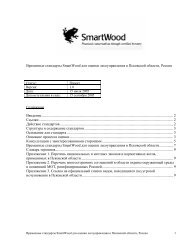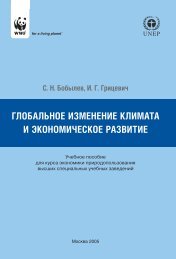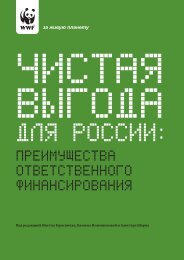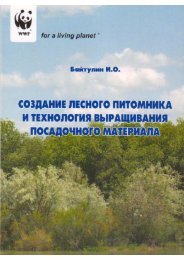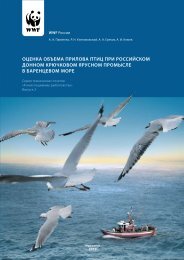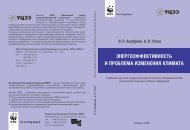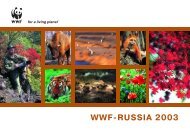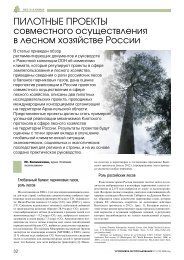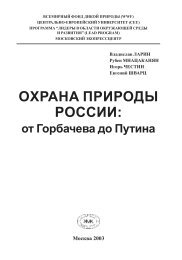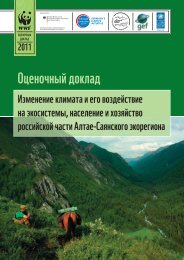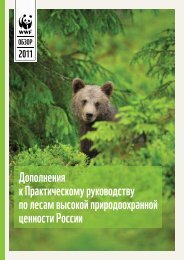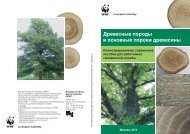Russia-China Timber Trade_cover.jpg
Russia-China Timber Trade_cover.jpg
Russia-China Timber Trade_cover.jpg
Create successful ePaper yourself
Turn your PDF publications into a flip-book with our unique Google optimized e-Paper software.
Figure 21. Estimates of legally and illegally logged timber in Primorskiy Kray in 2000, (000 cu. m) (11):A – total cutting volume; B – illegally logged timber volume according to the Kray Administration (data includes logging without a license;C – illegally logged timber volume estimated by the regional UVD (during 9 months); D – illegally logged timber volume estimated byGreenpeace; E – illegally logged timber volume estimated by WWF.According to <strong>Russia</strong>n forest regulations, thinning, or “maintenance” cutting is intended to improve quality offorests by removing old trees, sick trees, and trees that pose a fire threat. Forest management units (leskhozes)conduct this kind of cutting themselves or contract local companies to do the logging. This kind of cutting,allowed within protected areas, is exempt from lease payments and stumpage fees. Actually, this maintenancecutting or sanitary logging has been converted into “income” logging in forests to increase volumes of healthyhigh-grade commercially valuable trees for export.Commercially valuable tree species are the main logging targets for illegal loggers. Since the accessible resourcesof large high-quality oak and ash logs have been exhausted in parts of the southern RFE, intenseillegal logging has begun in the remaining protected and reserved areas. Forest industry experts believe thatover 70% of the 1 st grade oak and ash roundwood exported from the southern RFE is harvested in violation ofthinning regulations or from illegal harvest. Attractive prices for valuable hardwood, paid in cash by Chinesetraders at the border encourage illegality, thus significantly damaging the forests and habitats of many species.The following rare and valuable tree species in RFE are major targets in maintenance and illegal logging:1. Korean pine (Pinus koraiensis) – completely forbidden for commercial harvesting;2. Oak (Quercus mongolica) – allowed for commercial harvesting, although its commercially valuable resourcesare almost exhausted, except for those in protected riparian zones and Group I forests;3. Manchurian ash (Fraxinus mandshurica) – the same as oak;4. Elm (Ulmus japonica) – the same as oak and ash;5. Linden (Tilia amurensis) – completely forbidden for commercial harvesting in Primorskiy Kray and AmurskayaOblast and partly allowed for cutting in some areas of Khabarovskiy Kray and Jewish AutonomousOblast;6. Nut tree (Juglans mandshurica) – completely forbidden for commercial harvesting;7. Amur cork tree (Phellodendron amurense) – Included in the <strong>Russia</strong>n Red Data Book (List of rare and endangeredspecies), any logging is completely forbidden.According to the Primorskiy Forest Service, 2,960,000 cu. m and 989,600 cu. m were harvested by commerciallogging and thinning, respectively, in Primorskiy Kray in 2003. This means that sanitary logging makes up 27%of the total volume of logging. However, the largest quantity of valuable tree species like Korean pine, oak andash is logged using sanitary logging licenses[15].The Primorskiy Forest Department reported that 365,600 cu. m of oak and 191,000 cu. m of ash were harvest-29



